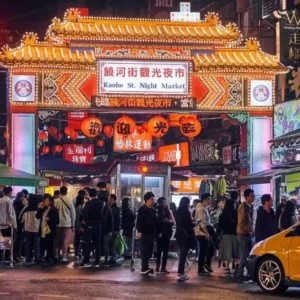Have you ever wondered why certain types of meat in Japan are poetically named after flowers and trees? The answer goes back more than 300 years.
In Japan, some popular meats are often referred to by symbolic names:
- Toriniku (chicken) = Kashiwa (oak tree)
- Baniku (horse meat) = Sakura (cherry blossom)
- Rokuniku (venison) = Momiji (maple leaf)
- Inoshishiniku (wild boar meat) = Botan (peony)

>> Just rice and pickled plum, yet this bento box costs $7 and still sells out
The Edo Period Origins
This unique naming tradition dates back to the Edo period, around 330 years ago, when eating the flesh of living animals was strictly forbidden. The 5th shogun of the Tokugawa shogunate, Tsunayoshi Tokugawa, issued the “Compassion for Living Beings” decree, banning the killing of livestock and wild animals for food. Dogs and cats were particularly protected, followed by birds, fish, and insects.
As punishments grew harsher, people began finding clever ways to bypass the law. Butchers and hunters started using code words—selling “oak” or “cherry blossoms” instead of chicken or horse meat, and “peonies” or “maple leaves” instead of wild boar or venison. This allowed them to trade meat without fear of punishment. Over time, these nicknames became so widespread that they survived even after the ban was lifted, and are still used in Japan today.
Why These Names?
- Chicken = Kashiwa (oak)
In Japan’s annual Dragon Boat Festival in May, oak leaves are used to wrap rice cakes (mochi) as offerings to the gods. Young oak leaves are green, but turn light brown as the seasons change—similar to the color of cooked chicken meat.

>> A sparkling blue ocean bottle: A one-of-a-kind dessert in Japan
- Horse Meat = Sakura (cherry blossom)
The most accepted theory is that fresh horse meat has a pale pinkish-red hue resembling cherry blossoms. During the Edo period, when preservation methods were limited, freshly cut horse meat would quickly lose its color, so its resemblance to sakura was even stronger.

- Venison = Momiji (maple leaf)
In the traditional Japanese card game Hanafuda, each month is represented by seasonal flowers and symbols. The October card shows a red maple leaf alongside a deer. Because of this imagery, venison came to be associated with momiji. Edo-period restaurants even advertised “maple leaf hotpot” on their signs.

- Wild Boar = Botan (peony)
Wild boar meat is deep red in color, similar to the vibrant hue of peony petals. This resemblance led people to nickname it botan.

>> Amazake – The ancient Japanese superdrink making a modern comeback
A Clever Culinary Tradition
Although food restrictions limited people’s freedom during the Edo shogunate, the Japanese found an ingenious way to preserve their culinary traditions. By disguising meat with poetic names inspired by nature, they not only evaded harsh laws but also created a unique cultural practice that continues to add charm to Japan’s food culture today.






